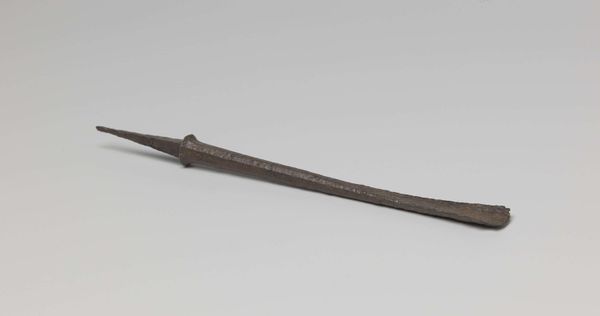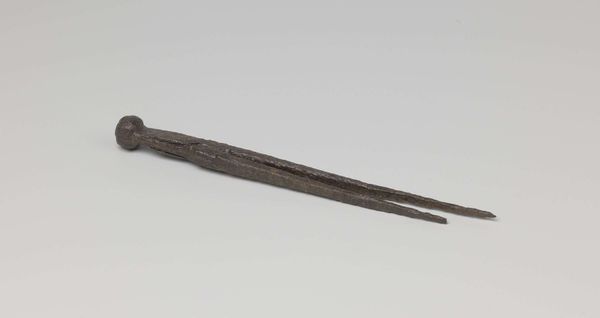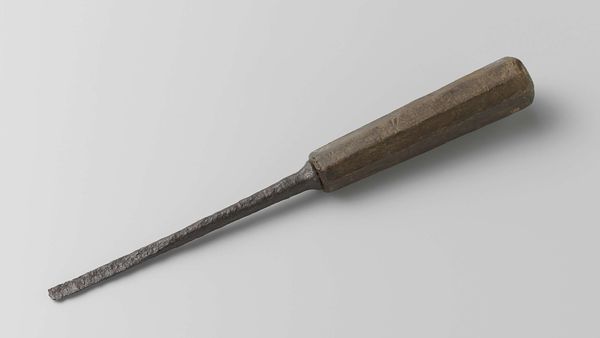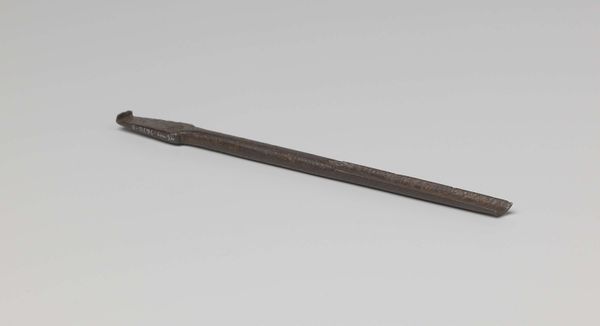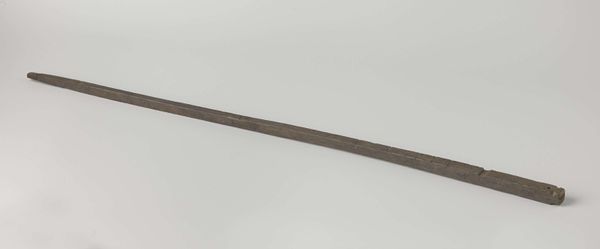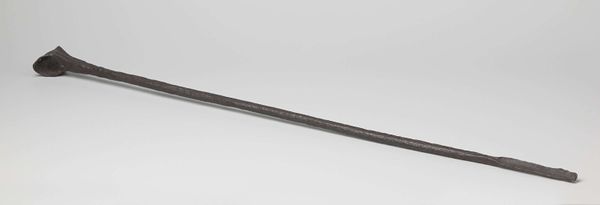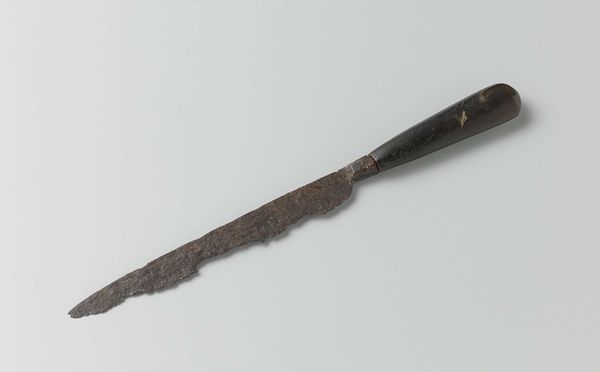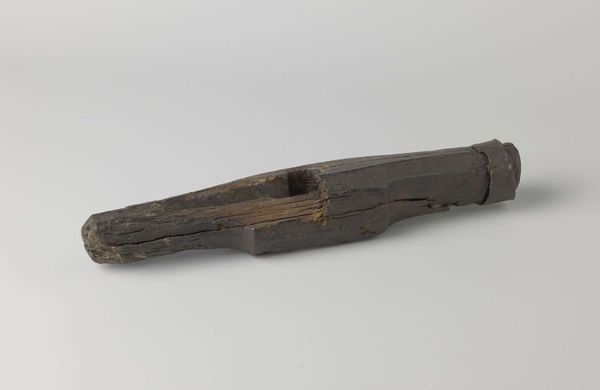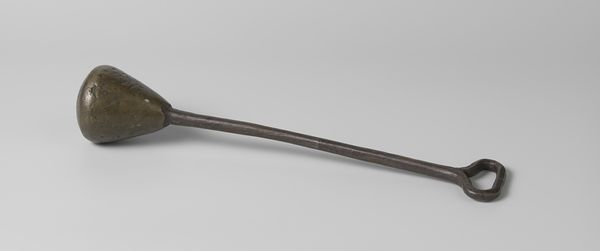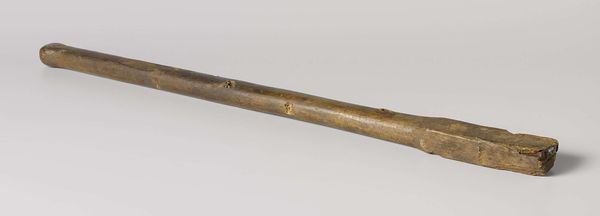
metal, sculpture
#
metal
#
sculpture
#
sculpture
Dimensions: length 21.2 cm, width 1.3 cm, height 2 cm
Copyright: Rijks Museum: Open Domain
Editor: This is an old table knife, dating back to 1590-1596, currently held in the Rijksmuseum collection. It's an anonymous piece with a handle made of horn. Looking at its weathered state, it speaks to me of everyday lives from centuries ago, but there's also a harshness, maybe even violence, suggested by the serrated blade. What do you see in this object? Curator: I see a potent symbol of social stratification. This knife, however humble in appearance, speaks volumes about dining practices and, by extension, access to resources during that period. Was this knife available to all members of society or a privilege afforded only to a few? Who did it empower, and whom did it disempower? Editor: I hadn't thought of it that way, focusing more on the individual using it. Are you saying that even a simple utensil can tell us about broader power dynamics? Curator: Precisely. Consider how communal eating evolved. The individual knife becomes a marker of a developing sense of self, distinct from the collective. It introduces individual portions, control, perhaps even a visual manifestation of personal wealth and control in food culture. What impact do you think such a change had on societal structures and interactions? Editor: That’s a perspective shift! It is so thought provoking to consider that something so basic as a knife could indicate power imbalances, class differences, or the emergence of individualism. Curator: Indeed. Everyday objects are frequently undervalued when looking at larger historical movements, but they frequently offer a nuanced reflection of prevailing social currents. Editor: I’ll certainly never look at cutlery the same way again! Thanks, that was super helpful!
Comments
No comments
Be the first to comment and join the conversation on the ultimate creative platform.
